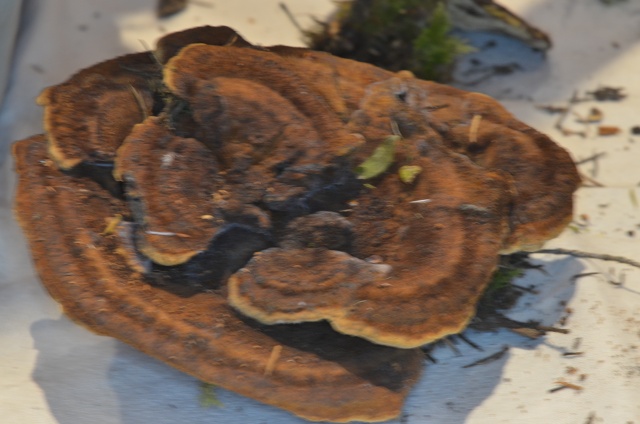21) Cantharellus roseocanus:
Also known as: Chanterelle, rainbow chanterelle, ..
Cantharellus cibarius.
Grows under sitka spruce, shore pine, or Engelmann spruce.
The distinguishing features of this chanterelle include (a) the bright orange
false gills, which contrast markedly with the duller cap
surface; and (b) the pinkish bloom that often covers young caps.
Until recently, all yellow or golden chanterelles had been classified
as Cantharellus cibarius. However, DNA analysis has shown that they are
a group of related species. Recently the Pacific golden chanterelle
(Cantharellus formosus), Cantharellus roseocanus, Cantharellus cascadensis and others have been
identified.
